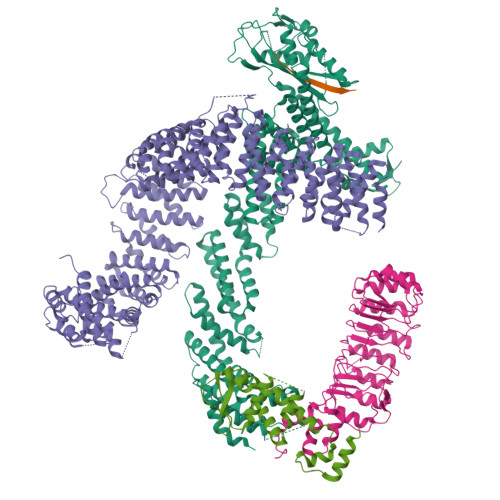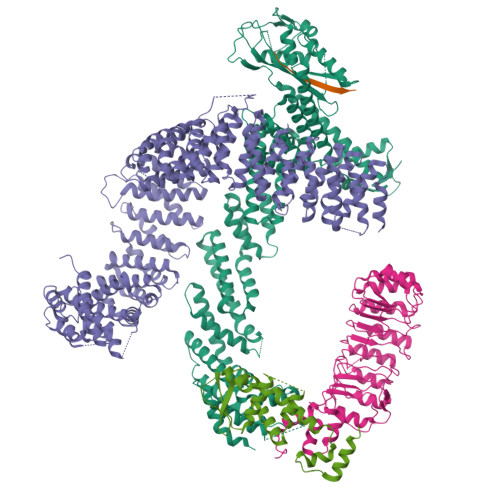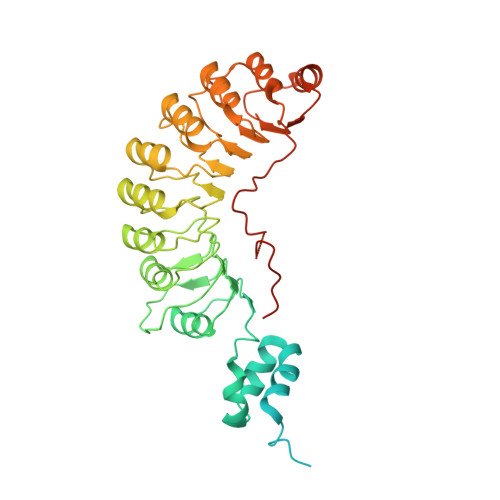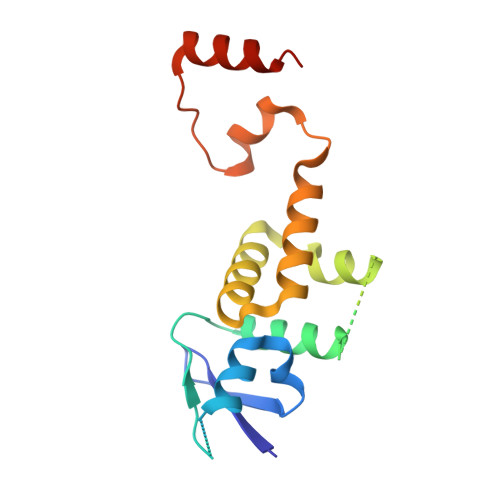Systemwide disassembly and assembly of SCF ubiquitin ligase complexes.
Baek, K., Scott, D.C., Henneberg, L.T., King, M.T., Mann, M., Schulman, B.A.(2023) Cell 186: 1895
- PubMed: 37028429
- DOI: https://doi.org/10.1016/j.cell.2023.02.035
- Primary Citation of Related Structures:
7Z8R, 7Z8T, 7Z8V, 7ZBW, 7ZBZ, 8CDJ, 8CDK - PubMed Abstract:
Cells respond to environmental cues by remodeling their inventories of multiprotein complexes. Cellular repertoires of SCF (SKP1-CUL1-F box protein) ubiquitin ligase complexes, which mediate much protein degradation, require CAND1 to distribute the limiting CUL1 subunit across the family of ∼70 different F box proteins. Yet, how a single factor coordinately assembles numerous distinct multiprotein complexes remains unknown. We obtained cryo-EM structures of CAND1-bound SCF complexes in multiple states and correlated mutational effects on structures, biochemistry, and cellular assays. The data suggest that CAND1 clasps idling catalytic domains of an inactive SCF, rolls around, and allosterically rocks and destabilizes the SCF. New SCF production proceeds in reverse, through SKP1-F box allosterically destabilizing CAND1. The CAND1-SCF conformational ensemble recycles CUL1 from inactive complexes, fueling mixing and matching of SCF parts for E3 activation in response to substrate availability. Our data reveal biogenesis of a predominant family of E3 ligases, and the molecular basis for systemwide multiprotein complex assembly.
Organizational Affiliation:
Department of Molecular Machines and Signaling, Max Planck Institute of Biochemistry, Martinsried 82152, Germany.






















